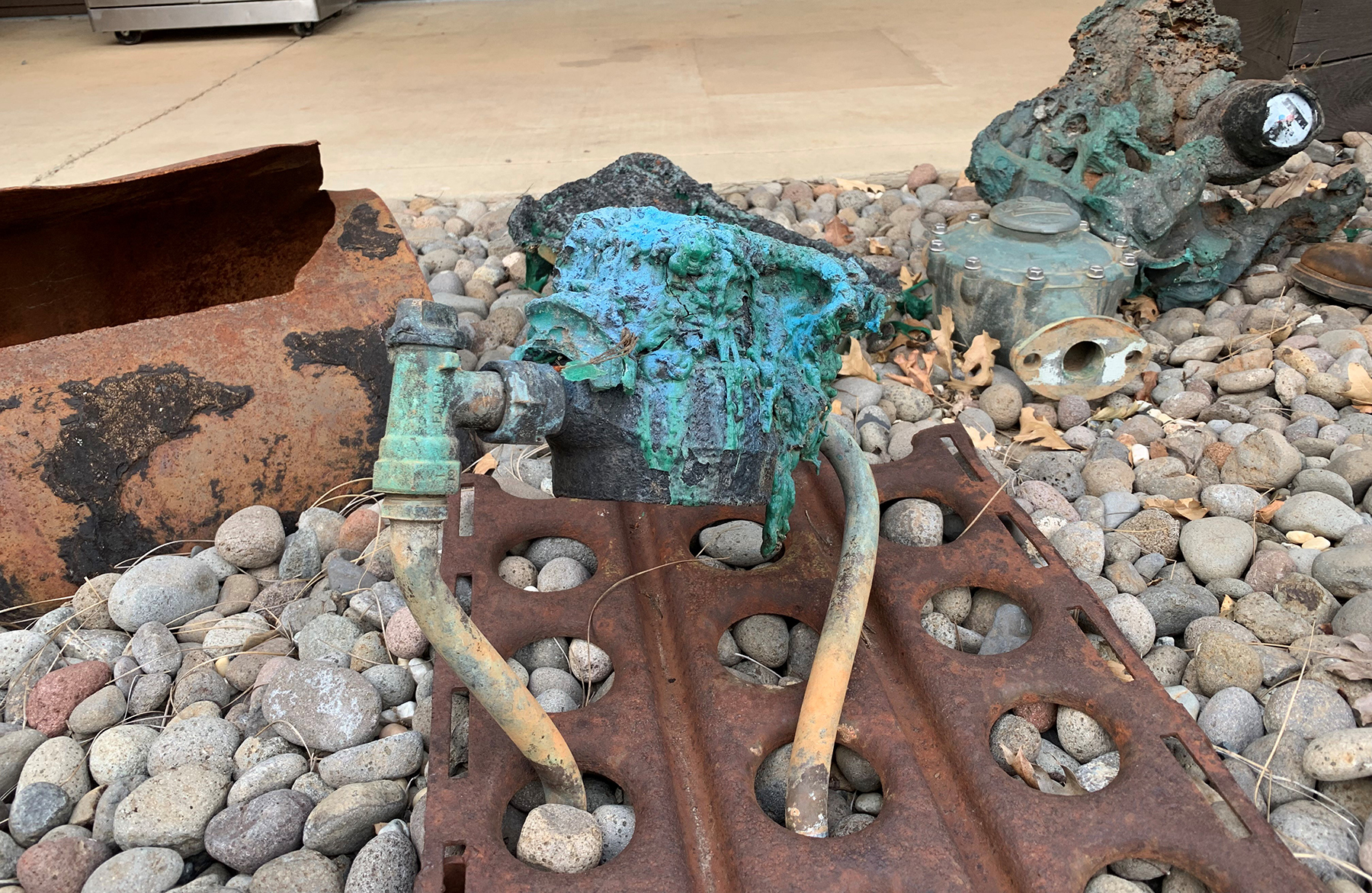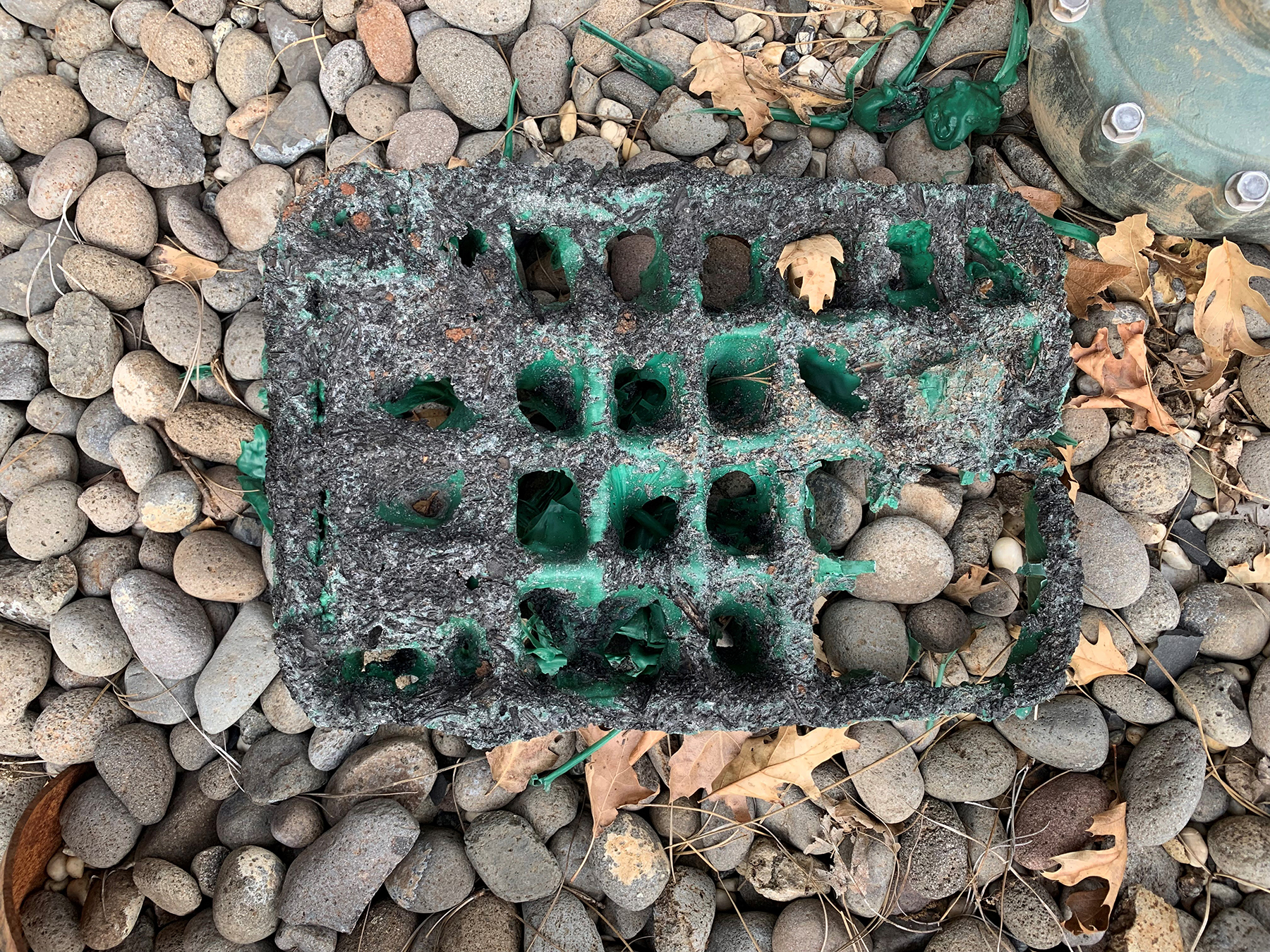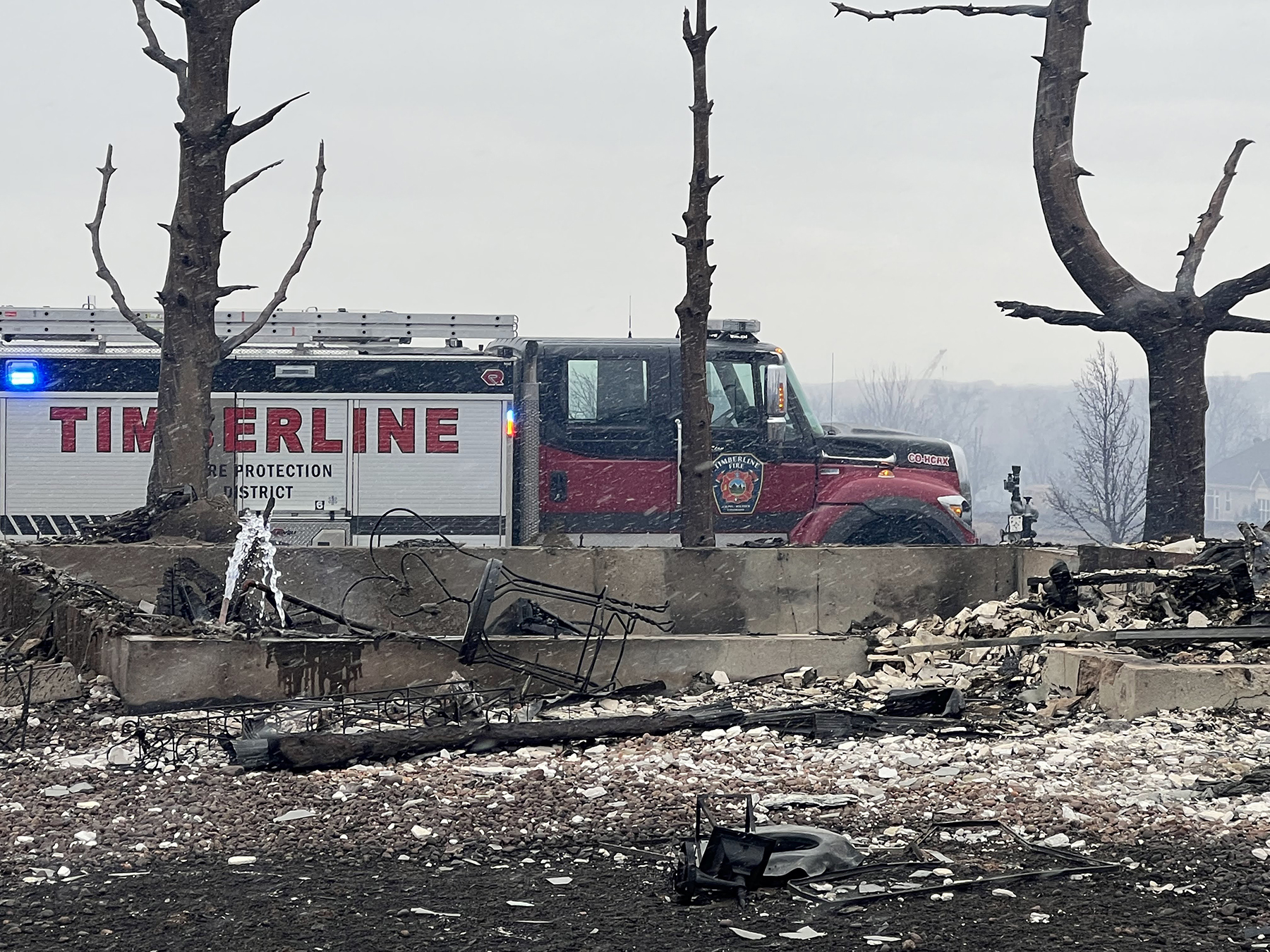By Jay Landers
In many areas across the United States, wildfires pose a growing threat to drinking water infrastructure, a complex issue that is only just beginning to be understood. Risks associated with wildfire include the physical destruction of infrastructure components as well as the contamination of drinking water supplies with known pollutants and other potentially harmful compounds.
As more communities experience the trauma of wildfire, they often must cope with the follow-on threat of contamination in their drinking water, a threat that can be hard to pinpoint and eradicate.
Added danger
Previous fire suppression policies have led to overgrowth in many forests on federal, state, and private lands. As a result, when fires occur, they tend to be larger and more intense, making them harder to combat, says Erica Fischer, Ph.D., P.E., M.ASCE, an assistant professor of civil and construction engineering at Oregon State University. Fischer’s research interests include finding ways to improve the resilience of structural systems affected by natural and human-made hazards.
“It’s just impossible to put out all these fires (now),” Fischer says. Climate change only exacerbates the problem, she says.

Adding to the danger is the increasing number of people moving into areas that fire experts refer to as the “wildland-urban interface.” In such areas, homes and other structures are near or intermingled with wildlands or vegetation that can burn during a wildfire. When a wildfire intrudes on these communities, the homes and other structures serve as additional fuel sources, resulting in intense conflagrations.
“Wildfires typically move quickly through a vegetative landscape,” Fischer says. However, when wildfires engulf homes or other structures, they often burn for hours, she notes. “You have a fire occurring in one spot for a substantial period of time.”
Contamination sources
This type of stationary fire caused by a burning home spells trouble for service lines, the small pipes that extend from a house’s water meter to the house itself. This is because thermal degradation of plastic pipes leaches contaminants into the drinking water distribution system to which the house is connected.
“That’s the first way we see contamination” of a drinking water system during a wildfire, Fischer says.

Testing at Oregon State and other research laboratories has confirmed that thermal degradation of plastic pipe materials releases volatile organic compounds, some of which are thought to have negative short-term and long-term effects on human health.
However, water distribution systems — those wide-ranging networks of pipes that carry potable water from central treatment plants to consumers — also commonly include plastic valves, gaskets, and other products. These can also experience thermal degradation as a result of wildfires, Fischer says. “There are a lot of other components of the water distribution system that are being heated directly and are being exposed to a fire,” Fischer says.
Another major source of contamination can occur when a distribution system becomes depressurized when massive volumes of water are used for firefighting purposes. Service lines damaged by fire can contribute to this depressurization problem when they leak water into the foundations of destroyed homes.

“It’s death by a thousand cuts,” explains Brad P. Wham, Ph.D., EIT, M.ASCE, an assistant research professor and co-director of the Center for Infrastructure, Energy, and Space Testing at the University of Colorado Boulder. Wham’s research interests include the evaluation, analysis, and design of hazard-resilient lifeline systems and multiscale soil-structure interaction of buried infrastructure.
Once depressurization occurs, “contamination in buildings, the air, or broken pipes can be sucked into the distribution system,” adds Andrew Whelton, Ph.D., a professor of civil, environmental, and ecological engineering and the director of the Healthy Plumbing Consortium and Center for Plumbing Safety at Purdue University. This contamination can include particulate matter, organic vapors, and debris, all of which mix with the water in the distribution system.
“That allows chemicals such as volatile organic compounds and semi-volatile organic compounds to find their way into the water,” Whelton explains.
In turn, the VOCs may be absorbed into plastic pipes within the distribution system and “come out very, very slowly,” Whelton says. Although similar in nature to VOCs, SVOCs are heavier and, therefore, less likely to evaporate into the air or diffuse into plastic, he says.
At the same time, pressure loss in water storage tanks can cause their vent pipes to “suck in smoke” that then contaminates the epoxy plastic lining of the tank, Whelton says. (In such cases, the lining may need to be removed and replaced, he notes.)
More research needed
Postfire sampling of distribution systems that have been damaged by wildfire has revealed the presence of VOCs at alarming levels, Fischer says. The concentrations of these compounds can be in excess of the allowable short- and long-term exposure limits for drinking water, she says.
Following the Tubbs Fire in October 2017, the city of Santa Rosa, California, “found a diversity of different VOCs and SVOCs present” in samples taken from its water distribution system, Whelton says.
Since then, some municipalities have tested for and found such compounds — sometimes at potentially dangerous levels — as part of their postfire sampling, while others have not checked for their presence. The absence of a uniform approach to testing reveals the dearth of current knowledge regarding which contaminants may be present in a drinking water system following a wildfire, Whelton says.
“We have a list of VOCs that keep showing up in drinking water distribution systems that have been affected by fire,” Whelton says. “As for the SVOCs, because many utilities and state agencies haven’t been doing the necessary testing, we don’t really know” if those compounds can be expected to be found in fire-damaged distribution systems, he says. For this reason, “it’s even more critical” that SVOCs be tested for following a fire, he says.
On Sept. 15, the National Academies released a 228-page report titled The Chemistry of Fires at the Wildland-Urban Interface. Among its many recommendations for additional study in this area, the report called for research “to further characterize potential chemical contamination to water resources (both surface waters and distribution systems) from WUI fires, and to better understand the formation pathways.”
Assessing the damage
Once a distribution system has been damaged by wildfire, a water utility faces the daunting task of having to determine the degree of the damage and the extent to which water in the system is contaminated. Fischer recommends following the steps outlined in a 2021 document from the U.S. Environmental Protection Agency titled Addressing Contamination of Drinking Water Distribution Systems from Volatile Organic Compounds (VOCs) after Wildfires.
As outlined in the document, a utility needs to flush its distribution system, let that water sit in the system for a minimum of 72 hours, and then conduct sampling and testing of it in accordance with appropriate EPA standards, Fischer says. “They need to do this at locations of damaged homes, destroyed homes, standing homes, and at their critical facilities.”
During this process, utilities must “cast a wide net,” Whelton says. “You then narrow down where your areas of concern are. Then you hunt down all of the contamination and remove it.” Removal could take the form of additional flushing of the system and range up to the replacement of heavily contaminated pipes or other features.
This process is neither quick nor easy, Whelton warns.
“Testing can go on for weeks or up to a year to find and remove contamination. It depends upon the size of your system and the extent of the depressurization and contamination,” Whelton says.
During this process, the utility should warn the population within the affected area not to use the water, Whelton says. And importantly, utilities “should not be issuing boil water advisories when you have fire (residue) in your distribution system, as there’s a high probability that it is chemically contaminated.” This is because if contaminated water is boiled, it can increase the population’s exposure to the contamination through inhalation as well as via dermal exposure and ingestion.
Prepare and protect
When wildfires occur, “water utilities are some of the most important members of a community,” Fischer says. Therefore, the more that water utilities can do in advance to prepare for such events, the better off they and their communities are likely to fare.
To this end, water utilities should work with their local firefighters in advance of wildfires to determine which areas are potentially the most vulnerable and would most need to have water pressure maintained in fires, Fischer says. Other considerations to be addressed include whether staff can operate a water treatment plant if the power goes out or what is to be done in the event that storage tanks appear as though they are going to run out of water.
“Do they have the ability to pull raw water into the system?” Fischer says. “Are they willing to make that decision? If so, how do they flush and treat the water in the system afterwards to get the water back to a potable state?” Mutual-aid agreements and interconnections with neighboring water agencies also can help address such situations, Fischer notes.
As for what steps water utilities can take to protect their infrastructure from wildfires, Wham suggests hardening valve boxes, meter pits, and other components located on the surface. “Using high-temperature-compliant materials at ground level, achieving adequate burial depth elsewhere, and collecting data through distributed sensing are ways of better protecting these assets in a fire,” he says.
Installing backflow prevention devices would also help prevent contamination from entering the distribution system in the event of depressurization, Wham notes. Ideally, the devices would be installed on the portion of a service line owned by the utility, he says, as they typically need to be tested periodically to ensure proper function.
Backflow prevention devices typically cost $1,000-$3,000 apiece, Whelton says. “It is not cheap when you start talking about systemwide backflow protection,” he notes.
However, the protection from contamination that they afford to distribution systems makes the expense worthwhile. “There need to be unique financial models that incorporate the purchase and continued maintenance of backflow prevention devices by the utility through the rate structures,” Whelton says.
More broadly, water utilities “should think outside the box” when developing their emergency response plans to try to account for as many outcomes as possible, Wham says. This is because “sometimes the inconceivable does happen,” he notes.
For example, a resilient water system should have a backup power source that is not dependent on the electrical grid or natural gas distribution because these services can be damaged or turned off in the event of a wildfire. A localized backup system, such as diesel-fueled generators, however, could potentially be kept in operation during a wildfire, helping a utility maintain pressure and keep water flowing within its distribution system.
Simply recognizing the threat that wildfire poses to water infrastructure would be a critical step in the right direction for many water utilities, Whelton says. As things stand, the majority of water systems across the United States are not acting to protect themselves from wildfires, he says. “Many of them are not aware of the lessons that have been learned so far. Many of them also don’t think they’ll ever have to worry about a wildfire.”



